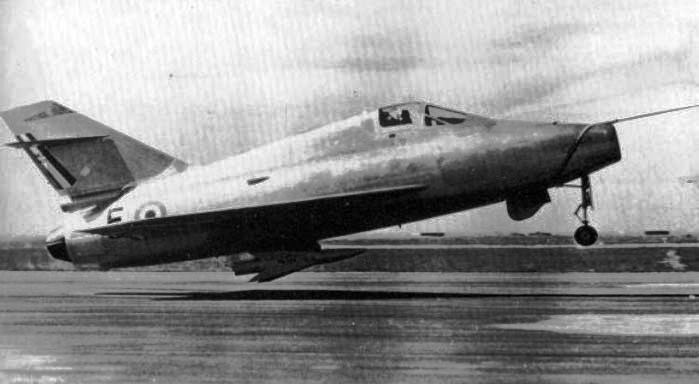Top speed 1,586 km/h Length 11 m Manufacturer Nord Aviation | Wingspan 6.58 m First flight January 15, 1954 | |
 | ||
The Nord Gerfaut (en:Gyrfalcon) was a delta wing experimental research aircraft, originally designed and built by SFECMAS - Société Française d'Etude et de Construction de Matériel Aéronautiques Spéciaux which was later merged with SNCAN - Société Nationale de Constructions Aéronautiques du Nord to form Nord Aviation.
Contents
Development
The Nord 1402 Gerfaut series had their origin in a state-sponsored study into delta and swept wings. To provide data for these studies Arsenal de l'Aéronautique (SFECMAS's nationalised predecessor) designed and built two supersonic gliders; the Arsenal 1301 and Arsenal 2301 with delta and swept surfaces respectively. Towed to the release point by SNCAC Martinet, Douglas DC-3 or SNCASE Languedoc transport aircraft, these gliders provided valuable data for the design of the Gerfaut.
To utilise this data SFECMAS engineers instigated the 1400,1500 and 1910 interceptor projects with delta wings and different propulsion systems. The 1400 developed into the Gerfaut series,the 1500 became the Nord Griffon and the 1910, with two large ramjet engines remained stillborn.
Different versions of the Arsenal / SFECMAS 1400 were studied as the:-
By the time that construction of prototypes started, the interceptor requirement had overtaken the Gerfaut so the aircraft was designed as a research aircraft.
History
The Nord 1402A Gerfaut first flew on 15 January 1954 as a single-seat single-engined monoplane with thin delta wings and swept vertical tail surfaces and a small high-set delta tailplane. The fuselage was a cylindrical monocoque structure with a nose intake and with the cockpit mounted above it, giving the aircraft its characteristic hump-backed look. It had a retractable tricycle landing gear and was originally powered by an internal 2800 kg (6,173 lb ) thrust ATAR 101C turbojet. On 3 August 1954 it became the first aircraft in Europe to exceed Mach 1 in level flight without afterburners. The second aircraft was the Nord 1402B Gerfaut 1B which had a larger wings and an Atar 101D engine. The third aircraft, the Nord 1405 Gerfaut II, first flown in 1956 was similar but had a refined structure, a clipped delta wing and an ATAR 101F engine. After it had finished test flying the third aircraft was used to test air intercept radars.
Variants
Operator
Specifications (1402A)
Data from Flight 1956
General characteristics
Performance
